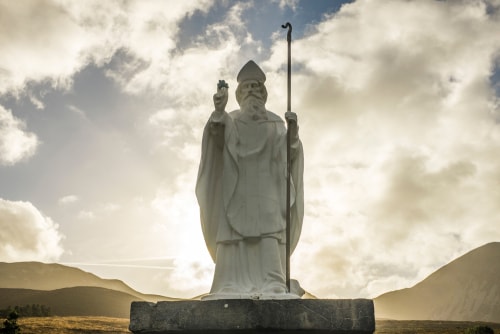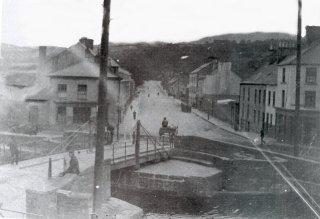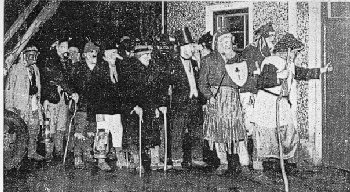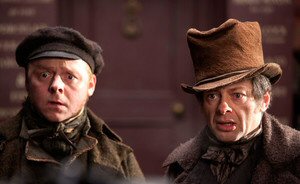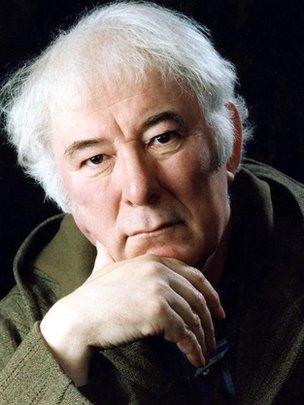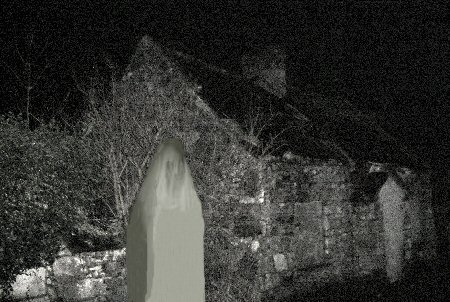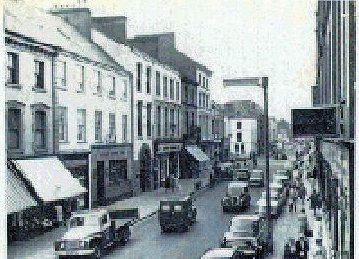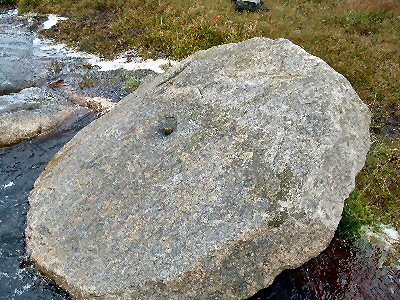St. Patrick is more than just a holiday where we celebrate being Irish and drink and have fun. In fact, St. Patrick was a real person and he had a huge impact on the history of Ireland as well as one of everyone’s favorite holidays!
St. Patrick is known as a patron saint of Ireland and is one of the most recognized figures in the Christian religion. Although he is widely celebrated, we do not actually know a lot about how he lived his life whenever he was alive. There are tons of stories that you can locate that are going to be associated with St. Patrick which include things such as him banishing snakes from Ireland, but sadly, most of these are nothing more than fairy tales that have been made up by expert storytellers.
St. Patrick was born in Britain sometime around the fourth century to a set of wealthy parents. His death is rumored to have occurred sometime on March 17th in 460 AD.
Patrick’s father was a Christian deacon but people believe that this role was taken because of all of the incentives that he got on his taxes due to the fact that there are no signs that point to the fact that Patrick’s family was one of religion.
St. Patrick Captured by the Irish
Whenever Patrick was sixteen, a group of Irish raiders attacked his family’s estate and took him prisoner, sending Patrick to Ireland where he would be held in captivity for around six years. It is hard to say exactly where Patrick was held during this captivity, there are some people who believe that he was in Mount Slemish while others believe it was County Mayo.
Nevertheless, while Patrick was being held in captivity, he worked outdoors as a shepherd and was not allowed to be near people most likely for fear of him telling someone what had happened. It was during this time period when Patrick was alone and afraid of what his future held that Patrick finally turned to the religion in which he had known as a child which then lead him to become a devout Christian.
There is another rumor that states that Patrick actually dreams of converting people in Ireland to the Christian religion while he was being held in captivity, but there is no evidence of this that has been found.
St. Patrick’s Visions
Sometime during his captivity Patrick finally managed to escape. In what has been found of St. Patrick’s writing, he states that a voice told him that it was time for him to leave Ireland and that Patrick believed that it was God telling him this.
However, in order to escape, Patrick had to walk around two hundred miles from where he was being held to the coast. Once he made it to the coast, Patrick found his way back to Britain. After he had made it back to his homeland, another vision came to Patrick that to him that he needed to return to Ireland, but as a missionary this time.
It was after this vision that Patrick took up religion training for about fifteen years where he earned his ordination as a priest. Once he was ordained, Patrick now returned to Ireland with two things in mind. One was to minister to the Christians that were already residing in Ireland. The other was to try and convert the Irish that did not believe in Christianity. Strangely enough, what Patrick was sent to do is different than what many believe and that St. Patrick is actually the one who introduced Christianity to Ireland in the first place.
Crosses and bonfires
Being that Patrick was already familiar with the culture and the language in Ireland, Patrick used this to his advantage and started to incorporate the rituals that the Irish did into the lessons that he taught on Christianity. This was his way of trying not to get rid of the beliefs of those who lived in Ireland completely.
One example of how he did this was that he had bonfires lit on Easter being that the Irish honored many of their gods with a fire. A sun was also placed onto the Christian cross so that it became a new kind of cross, one of which we know as the Celtic cross. This was done so that it seemed more natural for the Irish to be okay with such a Christian symbol thus making their worship and transition to Christianity as painless as possible.
This was not to say that there were not already Christians that lived in Ireland whenever Patrick first arrived as a priest, but a great majority of the island was more nature-based pagans.
Since the Irish culture is very rich on telling their myths and legends, it is easy to see how St. Patrick’s life became grander than it actually was.
The Many Legends of St. Patrick
There are plenty of legends that surround Saint Patrick, and here are just a few of the ones that are passed down amongst those in Ireland.
St. Patrick and The Shamrock
It is said that Saint Patrick taught the Irish about the Christian ideal of God, Jesus, and the Holy Ghost forming a holy trinity by using a shamrock as a way to show that God was three people in one God. You can first locate this story being told in 1726 although it is very possible that it is older than that. Ever since this story, the shamrock has been the single biggest icon of St. Patrick’s Day.
Back in the days when Ireland was still primarily pagan, there were a lot of them that believed in triple deities which may have helped Patrick in trying to teach them the Christian views he had been sent to preach.
Researchers say that little to no evidence exists that the Pagans help the shamrock as some sort of spiritual object. But, another researcher states that it may have been used to represent the powers of nature that were regenerative and when Patrick used it to describe the holy trinity is, it became a Christian icon.
Many pictures show Patrick with a shamrock in one of his hands and a cross being held in his other. Roger Homan wrote:
“We can perhaps see St Patrick Drawing upon the visual concepts of the triskele when he uses the shamrock to explain the trinity.”
St. Patrick Banishing The Snakes
Due to the fact that there are no snakes in Ireland, many people believe that Patrick banished them all from the island, casting them off into the waters after attacking him during one of his prolonged fasts. The inspiration behind this legend comes from the story of Moses that can be found in the Bible when Moses and his brother Aaron used their staffs to fight against the sorcerers that worked with Pharaoh their staffs morphing into snakes and consuming all the other snakes that were in the area.
But as is explained in a later section, there have never been any snakes in Ireland. As a result, there wasn’t anything for Patrick to rid the island of, in the first place.
Patricks’ Walking Stick
A few of the legends that you find in Ireland involve the Copog Phadraig, the Caoranach, and the Oillipheist. While Patrick was spreading the word of God in Ireland, it is said that he carried a staff that was made of ash wood. This stick would be thrust into the ground when he was preaching.
Today, it is said that at Aspatria (Ash of Patrick) the message that he was preaching took so long that by the time he was done, his stick had grown roots and had begun to sprout into a tree.
The Ancient Ancestors and Patrick Speak
A work from the 1100s called Acallam na Senorach gives the reader the story of how Patrick met with two of Ireland’s ancient warriors while he was on his mission to convert the pagans. It is unsure of how these two warriors survived to make it to the time that Patrick was there, nevertheless, Patrick took the time to try and convert the warriors to his religion all the while they defended their religion of paganism.
Saint Patrick’s Cross
Patrick has two crosses that are commonly associated with him. One is the cross pattee while the other is the saltire. The pattee is the cross that you will find associated with Patrick. The saltire can be dated back to 1783 and is often associated with the order of St. Patrick.
There is no real reason that can be found as to why the cross pattee is associated with Patrick. One theory is that the bishops are oftentimes shown associated with them. Patrick is one of the founding bishops of the Church in Ireland, so this is how this symbol may have become associated with Patrick. Many pictures that show St. Patrick show him with in a bishop’s clothing, all of which decorated with the cross pattée.
Even today the cross pattee can be associated with Patrick because it appears on the arms of the Roman Catholic Archdiocese of Armagh along with the Church of Ireland Archdiocese of Armagh. This is often believed to be done because Patrick was the first diocese in Armagh. The Down District Council also uses it on their headquarters in Downpatrick which is considered to be the place where Patrick was buried.
The Saltire of Patrick is red on a white field and is normally used to represent the order of St. Patrick which was founded in 1783. The Acts of Union that happened in 1800 caused the Saltire to be combined with the Cross of England, the cross of Scotland, and thus the union flag was formed. This is the flag that is commonly associated with the United Kingdom of Great Britain and Ireland. However, the saltire has no references to St. Patrick.
Saint Patrick’s Bell
In the national museum of Ireland sits a bell that is known as St Patrick’s bell. The first mention of this bell dates all the way back to 552.
The bell is considered to be a relic that was removed from Patrick’s tomb about sixty years after he died. The bell is said to be the Bell of the Testament which is one of the most precious relics that Ireland has.
St. Patrick’s Day
Everyone knows about St. Patrick’s Day. Going also by the name “the Feast of Saint Patrick”, the day is known as a religious and cultural celebration that is traditionally held on the seventeenth of March when it is said that St. Patrick died.
It was not until the early seventeenth century that the Christians and Catholic’s began to observe the holiday. It is considered to be the day that Christianity was brought over to Ireland by St. Patrick; it also celebrates the culture and heritage of the Irish.
Those who celebrate St. Patrick’s day in a more religious manner as it was intended to be, it is they spend the day for spiritual renewal and prayers often offered up for the missionaries that are spreading the gospel worldwide.
Snakes in Ireland
This is a myth that came around about St. Patrick is that he drove all of the snakes out of Ireland. There are no snakes that actually live in Ireland because of the waters being too frigid around the island, therefore, it makes it to where it is too cold for any snake to actually live on the island. However, it is common that this may just be a metaphor for getting rid of the pagan ways of those who called Ireland home.
Partying On St. Patricks Day
Up until 1970, St. Patrick’s Day did not involve a lot of partying. Instead, it was mainly focused on the religious aspects of the holiday. However, when the 70’s came around, the restrictions on people eating meat, dancing, and drinking were lifted for the day.
When the Irish came to America, that was when the party started. It is uncertain when the first parade actually took place, but the earliest that we can trace back the celebrations is to Boston in 1737 as well as New York 1762. Each year that passed and more Irish immigrants came to the US.
Some of the major parties that everyone around the world knows about is the parade that happens in New York and Chicago always dying their river green in celebration.
Ireland and The Color Green
Many people believe that if you do not wear green on St. Patrick’s Day, you are going to get pinched. However, why is this? A lot of the connection to the color green comes from the fact that there is a lot of green in Ireland when spring comes around, plus there is green in
the Irish flag. Oh, and let’s not forget that the island of Ireland is known as the Emerald Isle. One more thing that brings about the wearing of green is the fact that if you do not wear green, then a leprechaun is going to see you and pinch you.
Shamrocks It is said that Patrick used a shamrock as a way to explain the holy trinity when he was spreading Christianity. But, the shamrocks did not become a thing until the seventeenth century.
Leprechauns
Leprechauns are not real, but they do come from popular Irish folklore. These small people were the shoemakers who took what they made from making shoes and put them in a pot at the end of a rainbow. People often times look for leprechauns to try and get them to give away a piece of gold, but also because leprechauns are supposed to be good luck!
Corned beef and cabbage
This is a meal that is traditionally served on St. Patrick’s day. Corned beef was chosen because cows were not usually slaughtered for meat in Ireland but were used for milk as well as the strength they provided. But, once again, corned beef and cabbage came from America going back to the Irish immigrants that were living in New York. These immigrants were buying their meat from butchers that were kosher as to not let go of their roots.
The corned beef and cabbage are more of a Jewish tradition where the corned beef and cabbage is put into a pot with potatoes and carrots. In Ireland, the corned beef is typically lamb or bacon.
